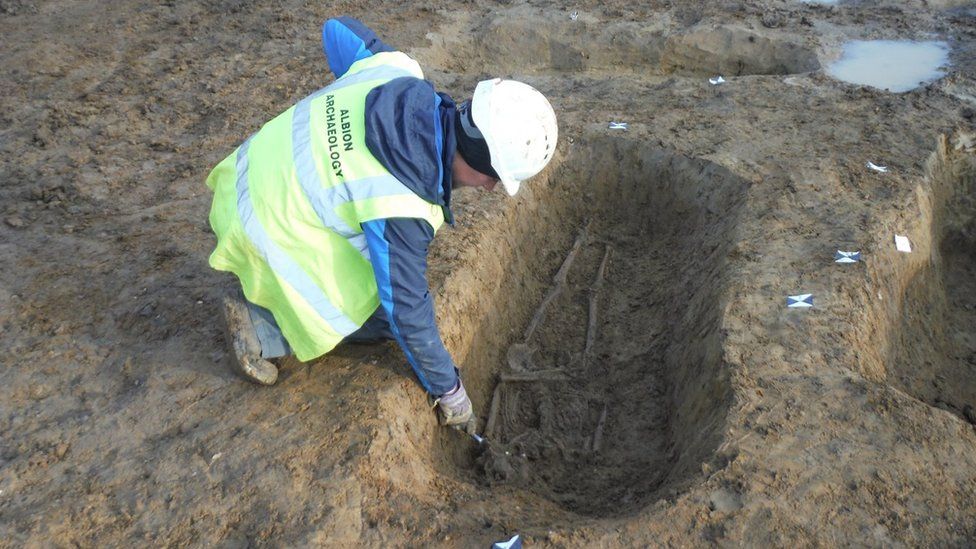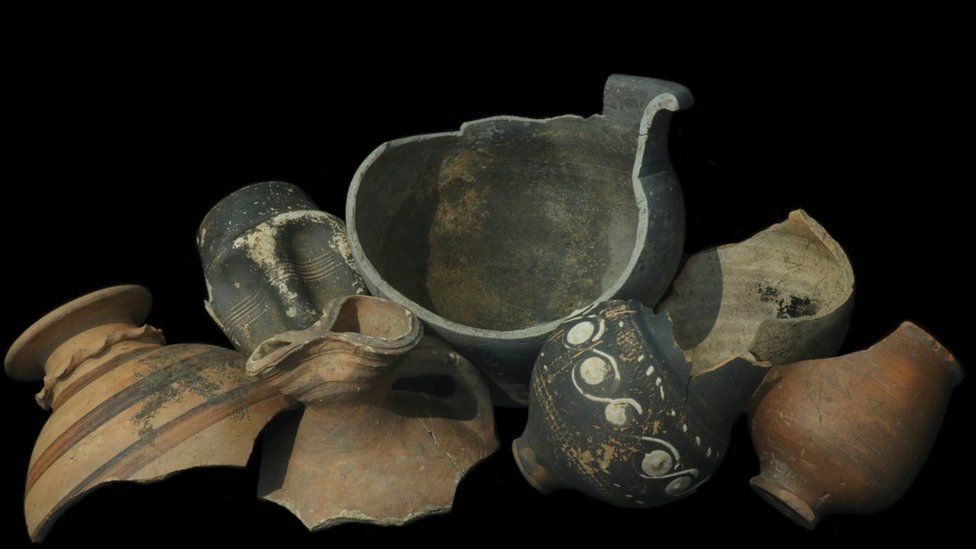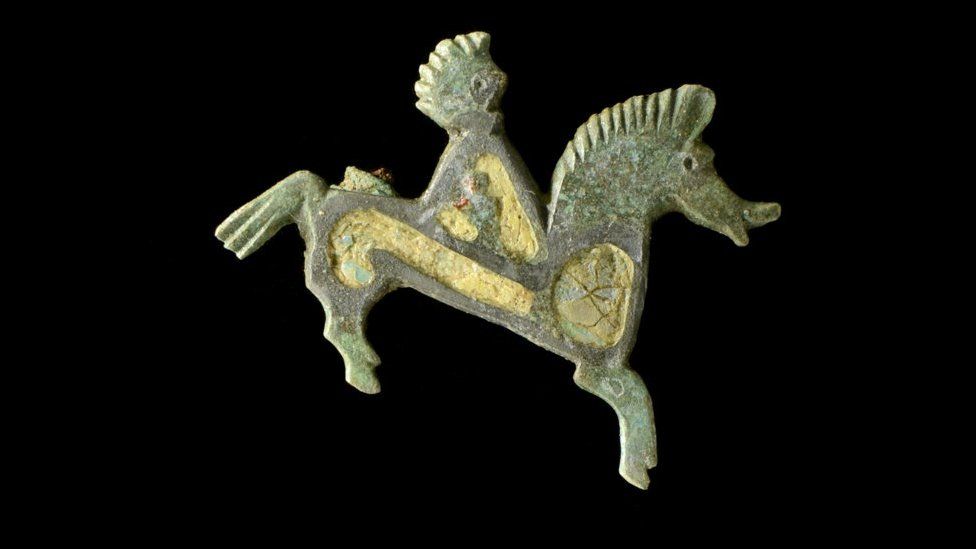Roman crucifixion: First example in UK found in Cambridgeshire
BBC NewsWednesday 8th December 2021

The skeleton of the crucified man was uncovered alongside other burials
The first example of a Roman crucifixion in the UK has been unearthed in a small Cambridgeshire village, archaeologists said.
The skeleton of a man was found with a nail through his heel in Fenstanton.
Cambridge University bone specialist Corinne Duhig said it was an "almost unique" find at what was a previously unknown Roman settlement.
She said it showed that even here, "inhabitants... could not avoid Rome's most barbaric punishment".
The settlement was discovered by Albion Archaeology, who began excavating land in 2017 ahead of a planned housing development.
They found five small cemeteries where 40 adults and five children were buried, some being from the same families.

A nail was found embedded in the man's ankle bone
The cemeteries have been dated to the third to fourth centuries AD.
In one grave, the skeleton of a man with a nail through his right heel bone was discovered.
Other injuries were found, suggesting the man had suffered before he died, and his legs had signs of infection or inflammation caused by either a systemic disorder or by being bound or shackled.

An aerial shot shows the excavated site in Fenstanton, near Huntingdon

It was an "almost unique" find, an expert said

The skeleton of the crucified man showed other signs of suffering, archaeologists said
Archaeologist Kasia Gdaniec, speaking on behalf of Cambridgeshire County Council's historic environment team, said: "These cemeteries and the settlement that developed along the Roman road at Fenstanton are breaking new ground in archaeological research.
"Burial practices are many and varied in the Roman period and evidence of ante- or post-mortem mutilation is occasionally seen, but never crucifixion."
Ms Duhig, an osteologist (bone specialist) from the university's Wolfson College, said: "The lucky combination of good preservation and the nail being left in the bone has allowed me to examine this almost unique example when so many thousands have been lost.
"This shows that the inhabitants of even this small settlement at the edge of empire could not avoid Rome's most barbaric punishment."
The council said Ms Duhig's research into evidence of crucifixion from this period around the world revealed only three other possible examples - one from La Larda in Gavello, Italy, one from Mendes in Egypt and one from a burial found at Giv'at ha-Mivtar in north Jerusalem, found during building work in 1968.
She found only the Jerusalem example to be a likely crucifixion because the right heel bone retained a nail which was in exactly the same position as the Fenstanton burial.
The county council said it was usual to remove any nails after crucifixion for re-use or disposal, but in the Fenstanton case, the nail had bent and become fixed in the bone.
During the excavation, a number of other items were unearthed including enamelled brooches, coins, decorated pottery and animal bones.

Pottery and other items were unearthed during the dig

An enamelled copper-alloy horse and rider brooch was one of the finds
A large building and a formal yard or road surfaces indicated the presence of an organised Roman settlement with signs of trade and wealth, the council said.
It said it hoped to be able to display the finds eventually.
Fenstanton's High Street follows the route of the Via Devana, a road which linked the Roman towns of Cambridge and Godmanchester.

Roman crucifixion: First example in UK found in Cambridgeshire
The skeleton of a man with a nail through his heel is found in a settlement in a village.
www.bbc.co.uk